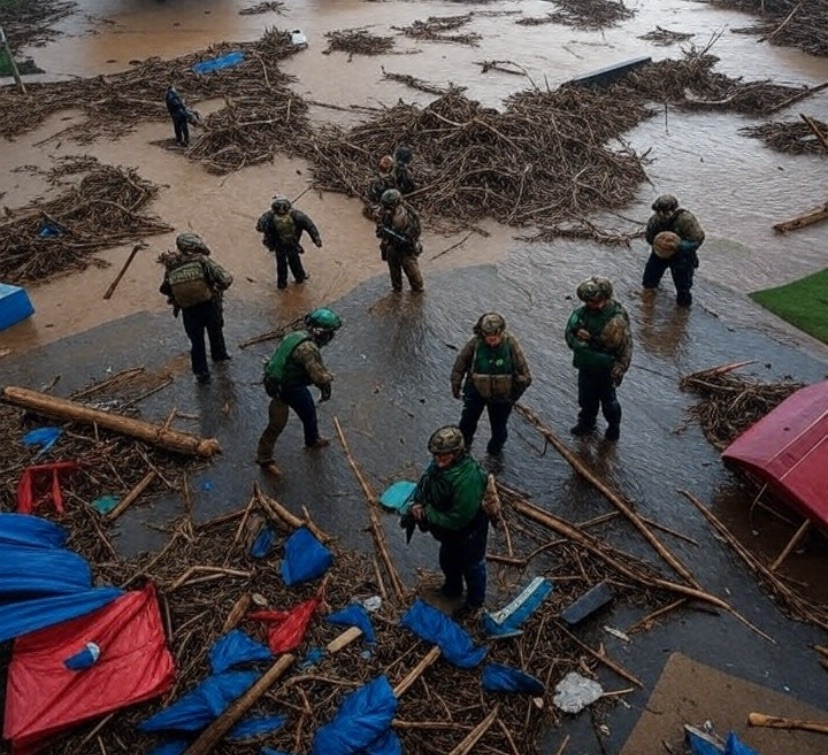NFL
Life-Threatening Flash Flood Emergency Engulfs Colorado Bend State Park as Part of Devastating Texas Hill Country Tragedy Unfolds

Life-Threatening Flash Flood Emergency Engulfs Colorado Bend State Park as Part of Devastating Texas Hill Country Tragedy Unfolds
July 13, 2025
Sunday, July 13, 2025, a life-threatening flash flood emergency has been declared in Colorado Bend State Park and its surrounding areas in central Texas, according to ABC News. This alarming development is part of a broader and devastating flood crisis that has gripped the Texas Hill Country, claiming at least 129 lives and leaving 166 people still missing since early July. The unfolding tragedy, exacerbated by unprecedented rainfall, has raised urgent questions about preparedness, climate change, and the effectiveness of emergency response systems.

A Crisis Deepens in Colorado Bend
The National Weather Service in San Angelo issued a flash flood emergency for Colorado Bend State Park, which includes the areas of Chappel, Bend, and U.S. Highway 190 near the San Saba-Lampasas County Line. Approximately 6 to 8 inches of rain have fallen in this region, located about 80 miles northeast of Kerrville and 30 miles northwest of Burnet. This deluge has triggered “considerable” flash flood warnings for nearby areas, including San Saba, Richland Springs, Lake Buchanan, Lampasas, and Lometa. The park’s entrance road, known to be prone to flooding during heavy rains according to the Texas Parks & Wildlife Department, has likely amplified the severity of the current emergency.
Colorado Bend State Park, a haven for outdoor enthusiasts with attractions like the 70-foot Gorman Falls and Spicewood Springs, is now a focal point of rescue efforts. The rapid rise in water levels, driven by the intense rainfall over a short period, mirrors the conditions that led to the catastrophic flooding earlier this month in Kerr County, where at least 103 deaths— including 36 children—have been recorded.
A Statewide Tragedy
The statewide death toll from the Texas floods has climbed to 129, with Kerr County bearing the brunt of the disaster. President Donald Trump has signed a disaster declaration for the county, and the Federal Emergency Management Agency (FEMA) is actively involved on the ground. Search and rescue operations continue, supported by an extraordinary effort from dozens of active-duty and former Navy SEALs. These elite volunteers, embedded with ABC News, are navigating treacherous terrain and diving into the debris-laden Guadalupe River to recover victims and provide closure to grieving families.
Former Navy SEAL Greg Froelick, speaking to ABC News, described the scene outside Camp Mystic, where his team used chainsaws to clear flattened trees. “None of us have seen anything like this,” Froelick said, reflecting on the scale of destruction. “You kind of have to put that in the back of your head, like expect to potentially find the victim. But … I think finding one, it’s reassuring in the sense that now the family knows, at least they have a little bit of closure.”
Climate Change in the Spotlight
Meteorologists have linked the intensity of these floods to an atmosphere warmed by human-caused climate change, which can hold more moisture and enable storms to dump excessive rain. A 2023 NOAA analysis suggests that climate change has increased the frequency of such flood events in the region by approximately 20%. The Texas Hill Country, naturally prone to flash flooding, experienced over 12 inches of rain in just a few hours early this month, according to AccuWeather, creating a perfect storm during the vulnerable overnight hours.
Shel Winkley, a meteorologist with Climate Central, noted, “Our rain events are not as uniform as what they used to be. So, you’ll get these big rain events happening in localized areas, tapping into the historic level of moisture in the atmosphere.” This phenomenon has turned the region, often dubbed “flash flood alley,” into a deadly trap for campers and residents alike.
Controversy Over Response
The disaster has sparked controversy over the timeliness of warning alerts. President Trump, when questioned by reporters, defended the response, stating, “I think everyone did an incredible job under the circumstances. Only a very evil person would ask a question like that. This has been heroism.” He deflected concerns about the alert system, emphasizing state-led efforts and dismissing federal responsibility. However, questions persist about whether local officials adequately warned residents and campers in the affected areas, a concern heightened by the discovery of over 90 bodies in Kerr County alone.
Kerr County leaders have prioritized victim recovery over immediate reviews of pre-flood actions, but the debate continues. The involvement of Navy SEALs and other rescue teams underscores the challenges posed by downed power lines, debris, and inaccessible areas, suggesting potential gaps in preparedness that may need urgent attention.
Looking Ahead
As search and rescue operations persist, the focus remains on saving lives and supporting affected communities. The ongoing emergency in Colorado Bend State Park serves as a stark reminder of the increasing vulnerability of the region to extreme weather events. With climate change amplifying these risks, experts call for enhanced infrastructure, improved warning systems, and greater public awareness to mitigate future tragedies.
For now, the people of Texas—and particularly those in the Hill Country—face an agonizing wait for news of their loved ones, while the nation watches a disaster unfold in real-time. Updates will continue as this story develops.












